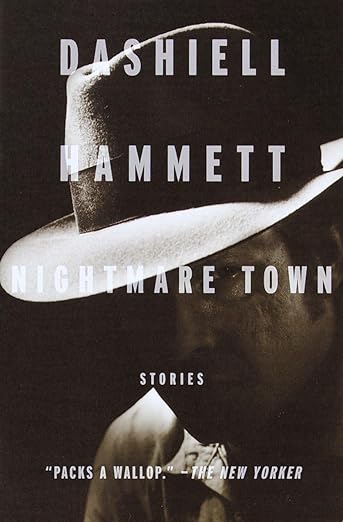Nightmare Town
Dashiell Hammett
1920s
9.7


One strain of reevaluating American cultural trends could very well land on Dashiell Hammett as the entrepreneur or evaluator in charge just for noir movies or noir art which obviously bled into Pop Art and perhaps soap operas. I look at it from a different angle. How good are the stories in the collection. What's interesting or unique about them. What's the style. One strain is no better than any other but one asset of mine is I enjoyed reading Nightmare Town. The stories except for a few rare diversions sometimes brilliant sometimes okay are arid and dynamic flip-books but the queue of the pages feels pulled from the friction of a rapidly spinning globe burning finger, the crass nihilism of earth tones and of women who are resolutely fascinating (for no real reason), and a final self-inflicted shot of emaciated deprecation. That's like a corner. That's like a line above one's head as you're trying to convince yourself to fall asleep. It's nice, I mean. It's cozy. The solutions or complexities of each individual story are good mystery but I am not creating anything when I say that's not the heart of noir—the momentum and the aesthetic momentum—plus cynicism—are. Which Hammett had an extraordinarily good handle on. "Visionary." My favorites stories were: 'Nightmare Town,' 'Ruffian's Wife', 'The Man Who Killed Dan Odams', 'Night Shots', 'The Assistant Murderer', 'His Brother's Keeper', 'Two Sharp Knives', 'Death on Pine Street', 'Afraid of a Gun', 'A Man Called Spade', 'Too Many Have Lived,' 'They Can Only Hang You Once', 'and 'The First Thin Man'. There's also that Kurosawa connection.